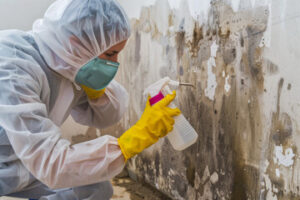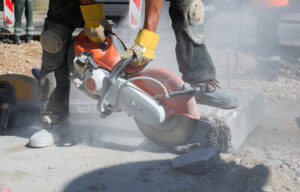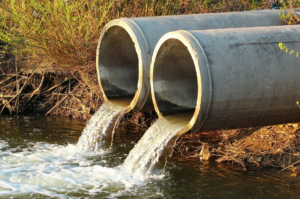Mold Remediation is more than just cleaning up visible mold. It’s also about addressing the issue that caused it to grow, such as correcting humidity levels and repairing leaks.

A restoration company will pack out any saveable contents, such as clothing and electronics, to be restored off site. Then, the restoration team will isolate the mold affected area. They’ll seal windows and cover them with plastic sheeting for extra protection. Learn more by visiting https://utahmoldremovalandremediation.com.
If left unchecked, mold spores can spread from the moldy area to other parts of the house and create additional infestations. To protect homeowners and workers, Water Extraction Experts isolate the affected area during mold cleanup to prevent the migration of these spores and safeguard everyone’s health. This step of the process also makes it easier to reduce humidity and dry the affected area, which are essential for successful mold remediation.
Physical barriers are used to contain the contaminated area, which include heavy-duty plastic sheeting or temporary walls made of materials like plywood. These barriers are placed around the moldy area and secured with duct tape. A negative air machine is also used to exhaust containment area air to the outside, which ensures that any mold spores that become airborne during cleaning are trapped or vented outdoors instead of remaining indoors.
During this stage, it is crucial to wear personal protective equipment, including face masks and eye protection. This is to avoid inhaling or touching mold spores, which can cause allergic reactions.
It is also vital to remove and dispose of any porous or contaminated materials from the affected area, as well as to repair any water problems that may be contributing to the problem. This is to prevent any future mold growth, as mold spores are constantly in the air and will continue to grow until the moisture issue has been resolved.
A biocide is then sprayed on the affected area to kill any remaining mold spores and disinfect non-porous items, such as tubs, metals and sink cabinets. This product is available at most hardware stores and can be sprayed according to instructions on the label.
To further protect unaffected areas, a negative air flow is established in the contained area by using a device known as an “air scrubber.” This system draws in the surrounding air and filters it through HEPA-approved systems to capture any mold spores. Then it exhausts the filtered air to the outside, which establishes negative air pressure that inhibits the migration of mold spores into unaffected areas.
Sanitization
When mold is present, it’s important to sanitize the area. This process will eliminate any existing mold spores and prevent new ones from growing until the area is completely dry. The sanitization process involves applying an EPA-approved biocide to the affected areas. This chemical makes mold spores sterile, so they cannot spread. It’s applied to all porous surfaces, including walls and floorboards. It’s also used on non-porous items, such as metals and sinks.
This step of the remediation process is vital for ensuring that you are fully prepared to return home once the mold is removed. Before doing so, you should perform a visual inspection and check for any signs of damage or odors. You should also do an air quality test to verify that spores and mycotoxins are at safe levels.
It’s also a good idea to wash any clothes that were in the affected areas with hot water and mild detergent. Alternatively, you can use a bleach solution. For this, mix one part bleach to three parts water in a spray bottle. Spray the mixture over any visible mold and scrub it lightly with a scrubbing brush. For best results, make sure that you are using a non-ammonia cleaning agent. This will help to protect your skin and eyes. You should also wear the necessary personal protection equipment for this level of remediation. This includes an N95 respirator, goggles without vents and rubber gloves that extend to your mid-forearm.
While this isn’t always possible, it’s a great way to ensure that you’re not exposed to any harmful toxins. Additionally, it’s important to take steps to prevent future mold growth, such as controlling indoor moisture levels and promptly fixing any leaks.
Although it is not an effective alternative to removal, sanitization is a useful tool for reducing airborne contaminants and restoring your property after mold growth. This is typically only done if the mold problem is not extensive and does not involve a toxic black mold infestation. It is also not something that should be tried on your own, as the process requires precise knowledge and professional tools.
Removal
When it comes to the health of your family, mold is no laughing matter. It can cause numerous illnesses and even permanent damage to your home. This is why it is so important to work with a professional during mold remediation. Professionals will follow a strict process to ensure that all mold is removed and your home is safe for your family to live in again. This process includes inspection and assessment, containment to prevent spores from spreading, cleaning and removal of affected surfaces and materials, and drying the area.
During this step, professionals will seal off the affected space from the rest of your home or business with plastic sheeting. They will also close any windows or doors between the contaminated area and other rooms. They will also use fans and dehumidifiers to dry the affected areas quickly and thoroughly. This helps to reduce the spread of mold spores and other harmful substances.
Next, experts will wipe all surfaces that are not porous with a disposable wipe. They will then scrub non-porous surfaces that are visibly contaminated with mold, then rinse them with clean water. Porous surfaces like wooden wall studs will be treated with an EPA-approved biocide to kill any remaining mold spores. This is a very important step, as it will help to prevent new mold growth once the area is cleaned and dried.
If you see visible mold in your home, it is important to have a professional inspect the entire space. It is likely that there are more areas of hidden mold behind walls and in the insulation, drywall, subflooring and studs. This type of mold is harder to find and remove, so it is best to leave the task to a professional.
It is possible for homeowners to handle smaller jobs, such as the cleaning of a small section of drywall with visible mold growth. However, if you have experienced extensive water damage or significant black mold growth (Stachybotrys chartarum), it is recommended that you hire a professional restoration company to perform mold remediation and to repair the damaged areas of your home.
Drying
Once the visible and invisible mold has been cleaned, the area should be dried as quickly and thoroughly as possible. This is accomplished by identifying and correcting the source of moisture or water, then cleaning, dehumidifying and ventilating the area. Moisture control is the most important factor in controlling mold growth.
Moisture must be reduced to a level below that at which the materials will re-grow without a significant increase in mold levels.
When nonporous materials are wet, they should be immediately wiped down with a clean damp cloth or sponge and then rinsed with water. After rinsing, the cloth or sponge should be wrung out so that it is almost dry. This will prevent the spread of mold spores and further damage to building materials and furnishings. If necessary, the items should be removed and dried off-site or replaced as soon as possible.
Porous materials may have to be discarded or cleaned with a disinfectant or biocide (chlorine bleach solution is recommended) to remove visible mold and to reduce microbial regrowth. These materials should be contained as much as possible to minimize the spread of mold spores during cleaning or during investigations that might disturb potential sites of hidden mold problems. During this step, it is also important to wear protective gloves and eye protection when handling potentially toxic fungus.
The EPA guide recommends that air and surface samples should be taken to determine whether the contamination has been completely remedied. Sampling of biological material, such as dead mold and fungi, is recommended for special circumstances, when professional judgment dictates that it is appropriate.
Molds are everywhere, and a variety of substances can support their growth. They reproduce by releasing tiny spores, which continually float through the air and can land on any damp surface where they can survive. Some of these spores are harmless, but others can cause allergic reactions in humans. Molds eat organic material such as wood, paper, carpet, fabrics and foods, while others digest the everyday dust and dirt that accumulates in moist areas. The spores of some types of mold, like Cladosporium and Chaetomium, have a musty smell. The spores of some, such as Penicillium, which is used to make bleu cheese, are very allergenic.








